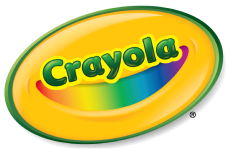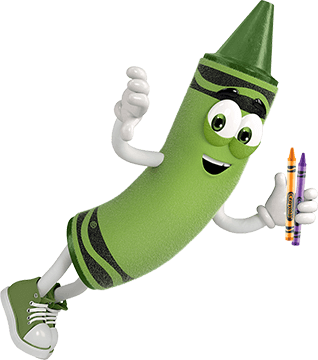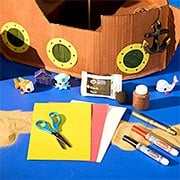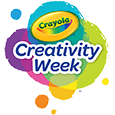Si tienes preguntas adicionales, ¡nos encantaría saber de ti! No dudes en llamarnos o enviarnos un mensaje de texto al 1-800-CRAYOLA días laborables entre las 9 AM y las 4 PM hora del Este. Si prefieres enviarnos un correo electrónico, visita nuestra página de contacto.
Preguntas relacionadas
Explora respuestas a preguntas comunes, consejos útiles para eliminar manchas e ideas creativas para aprovechar al máximo nuestros materiales de arte y recursos gratuitos.
-
Silly Putty® was discovered in 1943 by James Wright who mixed boric acid and silicone oil together. It was introduced to the public in 1950 by Peter Hodgson. Crayola® acquired the exclusive manufacturing rights to Silly Putty in 1977. Although the exact formulas Crayola uses to make Silly Putty are proprietary, we can share it is made primarily from silicone and color pigments.
-
If your pet has ingested a Crayola or Silly Putty product, please contact a veterinarian for assistance. All Crayola and Silly Putty products have been evaluated by an independent toxicologist and found to contain no known toxic substances in sufficient quantities to be harmful to the human body, even if ingested or inhaled. In addition, Crayola and Silly Putty art materials carry the Art and Creative Materials Institute's (ACMI) APPROVED PRODUCT (AP) seal, which indicates these products meet or exceed specific quality standards.
-
To remove SILLY PUTTY from hair, you may wish to try using baby oil or a generous amount of hair conditioner along with warm water. Massage the product you choose around the scalp and area containing the Silly Putty and then gently comb it through.
After Silly Putty is removed, wash hair with shampoo.
Please bear in mind, all the stain removal suggestions we offer have been tested in our laboratory, but we are unable to guarantee the results. We recommend you first test our suggestion on a small, inconspicuous area.
If you have additional questions, we would love to hear from you! Feel free to call or text us at 1-800-272-9652 weekdays between 9 AM and 4 PM Eastern Time. If you would prefer to send us an email, visit our contact us page.
-
As a manufacturer of children's products, safety is our top priority at Crayola. Although our arts and crafts products are nontoxic, we do not recommend using them to make eyeliner, lipstick, or other makeup, and strongly discourage using them this way. Crayola art products were never intended to be used on the skin or face in this manner.
Makeup goes through specific and rigorous testing since it is intended to be used on the skin. Because they were never meant to be used as makeup, our colored pencils, crayons, markers, paint, and all art products have not been tested in the same way a makeup product is and should not be used as a cosmetic. Crayola art materials are not designed, tested, or approved for this purpose.
-
Yes, all Crayola® and Silly Putty® products are non-toxic and safe to use. Crayola has been a trusted brand in homes and schools for over 100 years, prioritizing safety since 1903.
Independent toxicologists consistently evaluate our products, confirming they contain no known toxic substances in quantities sufficient to harm the human body, even if ingested or inhaled. Both Crayola and Silly Putty art materials carry the Art and Creative Materials Institute's (ACMI) APPROVED PRODUCT (AP) seal, indicating they meet or exceed specific quality standards.




